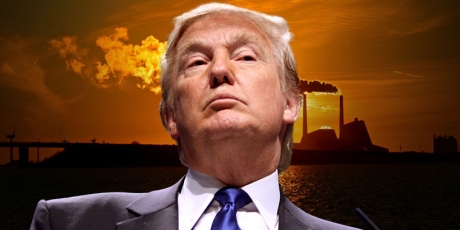- About
- Topics
- Story
- In-Depth
- Picks
- Opinion
- News
- Donate
- Signup for our newsletterOur Editors' Best Picks.Send
Read, Debate: Engage.
With the nation enveloped in the horrors of the COVID-19 outbreak, the Trump administration rushed to finalise its revision of the Obama-era rule on auto-pollution restrictions - all but dismantling the American government’s most ambitious climate policy.
Rolling back the tailpipe pollution standards, which were set under President Obama in 2009 and were then revised in 2012, has been a prime goal of the Trump administration over the past three years. The new rule will allow American automakers’ vehicles to last for merely 40 miles per gallon of gasoline by 2025, compared to 54 miles per gallon by 2025 as was mandated by the Obama era regulations. This means that over the lifespan of vehicles billions of additional gallons of gasoline will be consumed, which will result in a billion more tons of CO2 emissions.
As cars and trucks constitute the greatest source of CO2 emissions, the 2012 Obama-era tailpipe policy was considered the government’s most significant effort to tackle the climate crisis to date. Now, the new rule will enable automakers to invest less in developing energy-efficient technologies, and effectively eviscerates the legal framework created in order to set car manufacturers on a path toward net zero carbon emissions.
While members of the Trump administration hail the rule as a much needed boom for an economy in distress, many experts argue that the new regulations will ultimately lead to a greater economic drain. According to the administration’s own analysis, the new policy could end up costing the U.S. economy anywhere between $13 and $22 billion, as while it would lower the manufacturing costs for automakers, it would simultaneously drive up the gasoline prices.
Furthermore, some suspect that the policy would put American automakers at a grave disadvantage in the market, as their counterparts in other countries are obligated to invest in fuel-efficient technologies and will ultimately gain a competitive edge over U.S. vehicles.
This, of course, does not factor in the astronomical costs and economic, as well as humanitarian, strains that would result from the rule’s environmental repercussions.
“This is not just an inopportune moment to finalize a major rule-making… [i]n this case, it’s a completely irresponsible one,” said Senator Thomas R. Carper of Delaware, a Democrat serving as a ranking member on the Senate Environment Committee, in an interview for The New York Times.
But it is exactly because of the current state of emergency that the president chose to rush forward with this unscrupulous agenda; he is taking advantage of the COVID-19 chaos to promote policies with little to no scrutiny by lawmakers and a public anxious to get through a pandemic.
The recent rollback of the tailpipe policy is merely one out of roughly 100 different attempts made by the Trump administration since he took office to reverse environmental regulations instituted by President Obama.
It seems that slashing environmental protections and strengthening (at least momentarily) polluting industries is one of the few campaign promises Trump has successfully fulfilled thus far. It is evident in his administration's crackdown on laws defending water bodies from contamination and regulations limiting the operations of coal-fired power plants, as well as its relentless effort to muffle the government’s scientific agencies and experts that are tasked with compiling the science behind reports and policies.
The new rule will face a series of legal challenges. Last year, California announced that it will mount a legal battle against Trump’s reversal of the 2012 tailpipe pollution standards, and institute its own tailpipe regulations for vehicles operating in the state that will adhere to the Obama-era standards.
California is expected to be joined by numerous other states in what is likely to evolve into a multi-year legal battle against the new policy.
